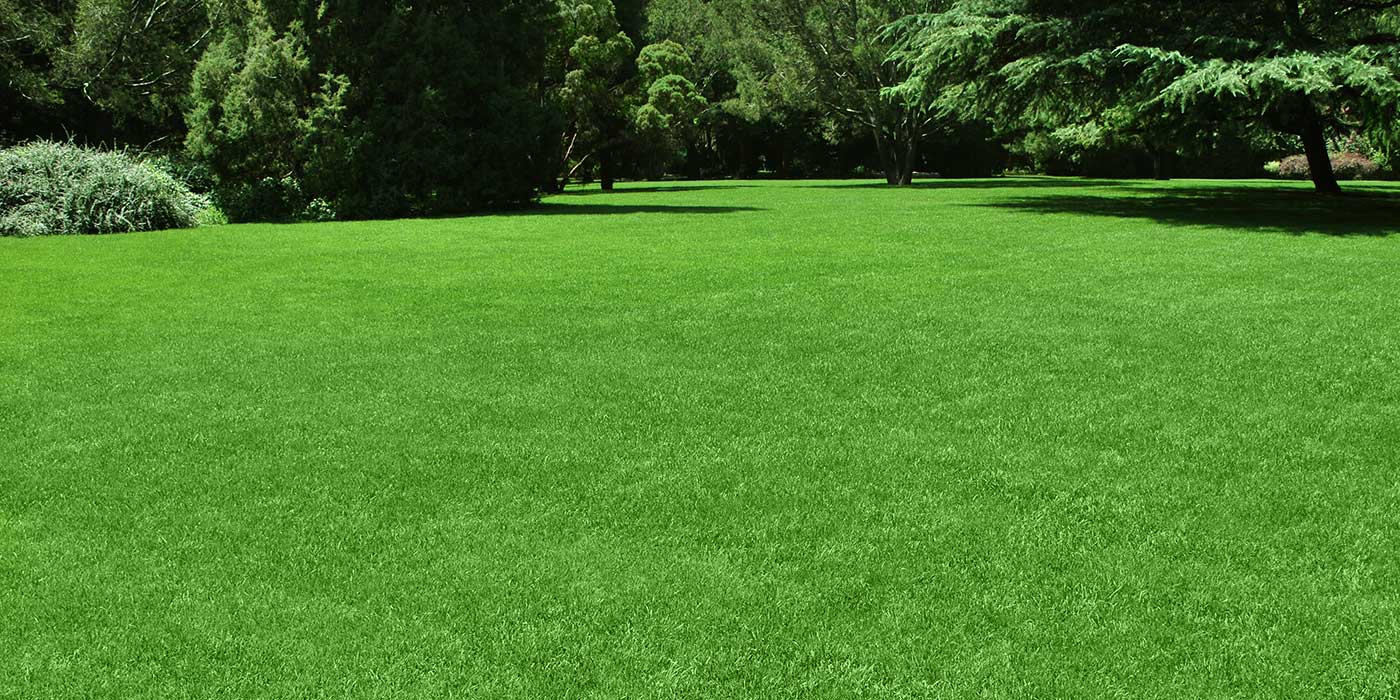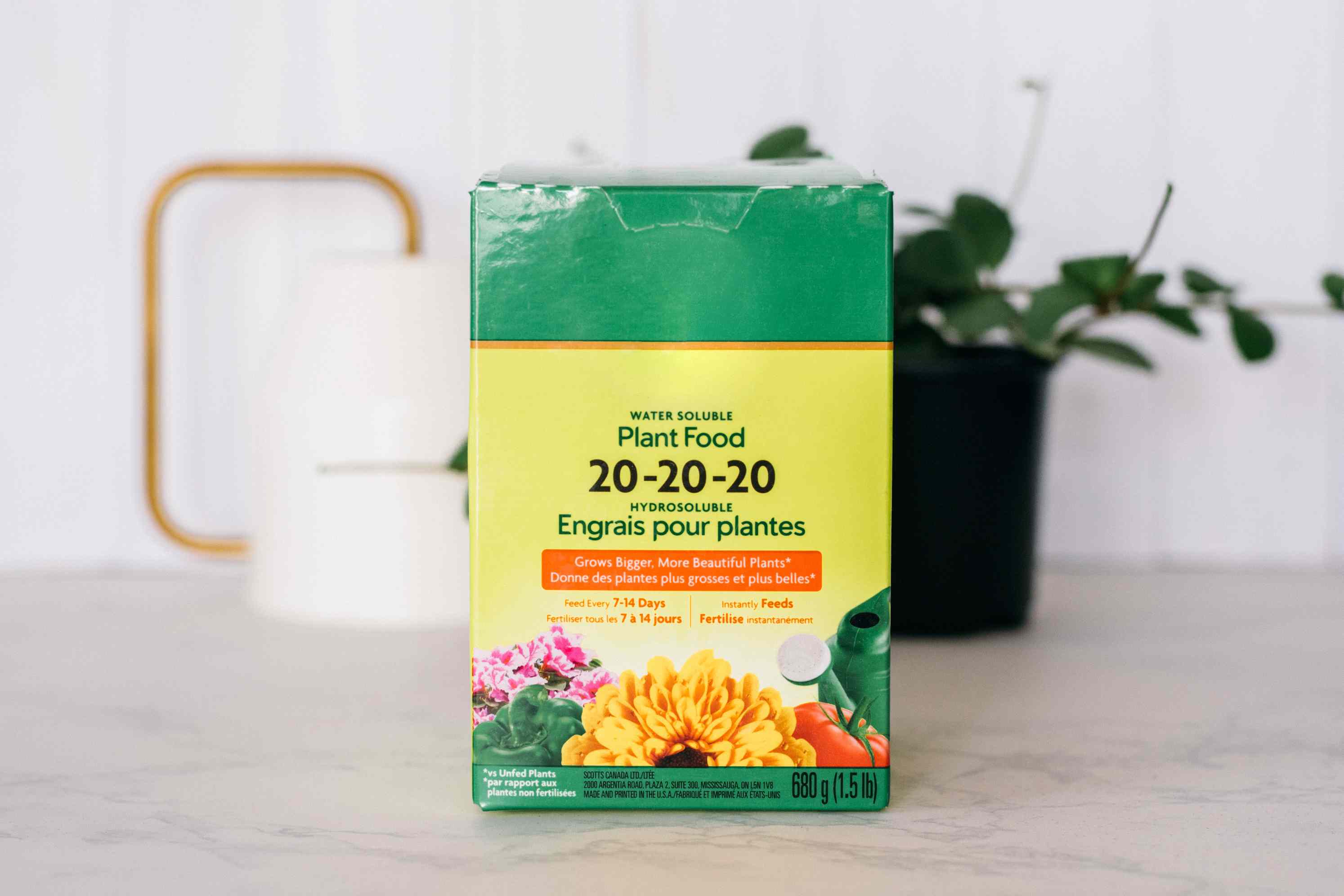Home>Gardening Basics>What Does Grass Fertilizer Do


Gardening Basics
What Does Grass Fertilizer Do
Modified: January 22, 2024
Learn the benefits of grass fertilizer and how it enhances soil health. Gain a deeper understanding of soil composition and the importance of proper fertilization.
(Many of the links in this article redirect to a specific reviewed product. Your purchase of these products through affiliate links helps to generate commission for Chicagolandgardening.com, at no extra cost. Learn more)
Table of Contents
- Introduction
- Definition of Grass Fertilizer
- Importance of Using Grass Fertilizer
- Role of Nutrients in Grass Fertilizer
- Different Types of Grass Fertilizers
- How to Choose the Right Grass Fertilizer
- Application Methods for Grass Fertilizer
- Benefits of Using Grass Fertilizer
- Potential Risks and Considerations
- Conclusion
Introduction
When it comes to maintaining a lush and healthy lawn, using grass fertilizer is essential. Fertilizer provides the necessary nutrients that grass needs to thrive, ensuring it grows strong, vibrant, and resistant to diseases and pests. Whether you are a homeowner looking to improve your curb appeal or a groundskeeper responsible for maintaining a pristine landscape, understanding the importance of grass fertilizer is crucial.
Grass fertilizer is a formulation of nutrients, typically nitrogen (N), phosphorus (P), and potassium (K), along with other essential elements like calcium, magnesium, and sulfur. These nutrients are vital for the growth and development of grass, promoting root growth, photosynthesis, and overall turf health.
Using grass fertilizer can significantly improve the appearance and quality of your lawn. It can help achieve a lush, green lawn with uniform grass coverage, reduce weed growth, prevent soil erosion, and enhance drought and disease resistance. However, it’s important to understand the different types of grass fertilizer and how to choose the right one for your specific needs.
In this article, we will explore the role of grass fertilizer, the importance of using it, the different types available, how to choose the right fertilizer, and the application methods. Additionally, we will discuss the benefits of using grass fertilizer and the potential risks and considerations to keep in mind.
Definition of Grass Fertilizer
Grass fertilizer is a substance or mixture that is applied to lawns and turf areas to provide essential nutrients that promote healthy grass growth. It is specially formulated to deliver the specific nutrients that grass requires to thrive, such as nitrogen (N), phosphorus (P), and potassium (K), also known as NPK.
Nitrogen is essential for stimulating green and leafy growth in grass, phosphorus aids in root development and overall plant health, while potassium helps with disease resistance and stress tolerance. In addition to these primary macronutrients, grass fertilizer may also contain secondary macronutrients like calcium, magnesium, and sulfur, as well as micronutrients like iron, zinc, and manganese, which are required in smaller quantities.
Grass fertilizers are commonly available in different formulations, including granular, liquid, and soluble forms. Granular fertilizers are solid particles that are spread over the lawn using a fertilizer spreader. Liquid fertilizers are mixed with water and applied using a sprayer. Soluble fertilizers are water-soluble powders or crystals that are dissolved in water and then sprayed onto the grass.
It’s important to note that grass fertilizer is not a one-size-fits-all solution. The composition and ratio of the nutrients in the fertilizer can vary based on factors such as soil type, grass species, climate, and specific lawn conditions. Therefore, it’s important to choose a fertilizer that is suitable for your particular needs and to follow the manufacturer’s instructions for proper application.
Overall, grass fertilizer plays a crucial role in maintaining the health and vitality of your lawn. By providing the necessary nutrients, it helps ensure that your grass is able to withstand various environmental stressors, resist diseases, and remain lush and green throughout the growing season.
Importance of Using Grass Fertilizer
Using grass fertilizer is vital for maintaining a healthy and vibrant lawn. Here are some key reasons why it is important to incorporate grass fertilizer into your lawn care routine:
- Nutrient Deficiency: Over time, soil can become depleted of essential nutrients that are necessary for optimal grass growth. Grass fertilizer helps replenish these nutrients, ensuring that your lawn has access to the right balance of macronutrients and micronutrients.
- Promotes Growth and Development: Grass fertilizer provides the necessary nutrients for the growth and development of grass, including root development, shoot growth, and leaf production. It helps encourage thick, lush grass that is more resistant to weeds and withstands heavy traffic.
- Enhances Color and Appearance: Fertilizing your lawn can result in a vibrant, green turf that enhances the overall appearance of your property. Fertilizer provides the nutrients that promote chlorophyll production, giving your grass that rich, healthy green color.
- Improves Resistance to Stress: Grass that is regularly fertilized has improved stress tolerance, making it better equipped to withstand drought, extreme temperatures, and other environmental stressors. It also helps the grass recover quicker from damage caused by pests, diseases, or foot traffic.
- Reduces Weed Competition: A well-fertilized lawn is dense and healthy, which helps to minimize weed growth. When grass is strong and growing vigorously, it naturally chokes out weeds, reducing the need for additional weed control measures.
- Prevents Soil Erosion: Grass fertilizer aids in the development of a robust root system, which helps bind the soil together, reducing the risk of erosion. This is particularly important in areas where heavy rains or strong winds can cause soil to wash away.
By using grass fertilizer, you can ensure that your lawn remains healthy, aesthetically pleasing, and resilient. It provides the essential nutrients that grass needs to thrive, leading to better overall lawn quality and enjoyment.
Role of Nutrients in Grass Fertilizer
The nutrients present in grass fertilizer play a vital role in the growth and health of your lawn. Each nutrient has a specific function and contributes to different aspects of grass development. Here are the primary nutrients found in grass fertilizer and their respective roles:
- Nitrogen (N): Nitrogen is essential for promoting vigorous leaf and shoot growth. It helps in the formation of chlorophyll, which is crucial for photosynthesis. Nitrogen also aids in the production of proteins and enzymes, which are essential for various metabolic processes occurring within the grass plants.
- Phosphorus (P): Phosphorus is crucial for promoting root development, establishment, and overall plant health. It plays a vital role in energy transfer and storage, helping the grass plants to utilize and convert nutrients more effectively. Adequate phosphorus levels in the soil contribute to stronger, more robust root systems.
- Potassium (K): Potassium is involved in many physiological processes within the grass plants. It helps in the regulation of water movement, thus improving drought tolerance and disease resistance. Potassium also aids in the synthesis of proteins and carbohydrates, contributing to overall plant vigor and stress resilience.
- Calcium (Ca): Calcium is essential for maintaining strong cell walls in grass plants. It improves cell strength and structure, enhancing the plant’s ability to withstand external stresses such as foot traffic and disease pressure. Calcium also plays a role in regulating plant nutrient uptake.
- Magnesium (Mg): Magnesium is a central component of chlorophyll molecules, essential for photosynthesis. It is involved in the production of energy and enzyme activation within the grass plants. Adequate magnesium levels contribute to vibrant green color and overall turf health.
- Sulfur (S): Sulfur is essential for protein synthesis and enzyme function. It contributes to the production of amino acids, which are the building blocks of proteins. Sulfur also enhances the efficiency of nitrogen utilization in the grass plants.
The proper balance and availability of these nutrients are crucial for the overall growth, vitality, and health of your lawn. By using a grass fertilizer that provides the right amounts of these nutrients, you can ensure that your grass has the necessary components to thrive and withstand various environmental stressors.
Different Types of Grass Fertilizers
Grass fertilizers come in different formulations, each with its own characteristics and advantages. Understanding the different types can help you choose the right fertilizer for your lawn’s specific needs. Here are the main types of grass fertilizers:
- Granular Fertilizers: Granular fertilizers consist of solid particles that are spread across the lawn using a fertilizer spreader. They are available in various slow-release or quick-release formulations. Slow-release granular fertilizers release nutrients gradually over an extended period, providing a steady supply for the grass. Quick-release granular fertilizers, on the other hand, deliver nutrients immediately but may require more frequent application.
- Liquid Fertilizers: Liquid fertilizers are concentrated solutions that are mixed with water and applied using a sprayer. They are quickly absorbed by the grass, providing almost instant access to nutrients. Liquid fertilizers are suitable for both foliar feeding (spraying on the leaves) and soil application.
- Soluble Fertilizers: Soluble fertilizers come in powder or crystal form that dissolves easily in water. They are typically used for liquid applications and are highly effective at providing targeted nutrition to the grass. Soluble fertilizers are often used in commercial or professional lawn care settings.
- Organic Fertilizers: Organic fertilizers are derived from natural sources such as compost, manure, or plant-based materials. They release nutrients slowly as they break down, improving soil health, and promoting long-term, sustainable growth. Organic fertilizers are typically less concentrated than synthetic options but offer environmental benefits and support beneficial microbial activity in the soil.
- Synthetic Fertilizers: Synthetic or chemical fertilizers are manufactured using synthetic compounds. They are often highly concentrated and provide immediate nutrient availability to the grass. Synthetic fertilizers can deliver targeted nutrient ratios, allowing for precise control over grass growth and development.
Depending on your lawn’s specific requirements and your personal preferences, you can choose the type of grass fertilizer that best fits your needs. It’s important to follow the manufacturer’s instructions and guidelines for proper application rates and timings.
Additionally, soil testing can provide valuable insights into the nutrient levels and deficiencies in your soil, helping you make informed decisions when selecting a grass fertilizer. Consulting with a lawn care professional can also provide expert guidance on the best fertilizer type and application practices for your specific lawn conditions.
How to Choose the Right Grass Fertilizer
Choosing the right grass fertilizer is crucial for achieving a healthy and thriving lawn. Here are some factors to consider when selecting the right fertilizer for your specific needs:
- Soil Test: Conducting a soil test can provide valuable information about the nutrient levels and pH balance of your soil. This will help you determine which specific nutrients your lawn may be lacking and guide you in selecting a fertilizer with the appropriate nutrient composition.
- Grass Species: Different grass species have varying nutritional requirements. Research the specific needs of your grass species to ensure you choose a fertilizer that matches its requirements. Cool-season grasses, such as Kentucky bluegrass and tall fescue, may have different nutrient requirements compared to warm-season grasses like Bermuda grass or St. Augustine grass.
- Nutrient Ratios: Fertilizers are labeled with three numbers indicating the ratio of nitrogen (N), phosphorus (P), and potassium (K). The ratio you choose will depend on the specific needs of your lawn. For instance, a high-nitrogen fertilizer may be suitable if you want to promote leaf growth, while a balanced fertilizer may be better for overall health and development.
- Release Type: Consider the release type of the fertilizer – slow-release or quick-release. Slow-release fertilizers provide a steady, gradual supply of nutrients over an extended period, while quick-release options deliver nutrients more rapidly. Slow-release fertilizers are often preferred as they promote more consistent and sustained growth, reducing the risk of burning the grass.
- Climate and Growing Season: Take into account the climate and growing season of your area when selecting a fertilizer. If you live in an area with a short growing season, a fertilizer with a higher nitrogen content may be beneficial to promote quick growth. Conversely, in warmer climates, a slow-release fertilizer can help ensure continuous nutrient availability without excessive shoot growth.
- Environmental Impact: Consider the environmental impact of the fertilizer you choose. Organic or slow-release fertilizers are often more environmentally friendly as they release nutrients gradually and reduce the risk of nutrient leaching into water bodies.
Remember to carefully follow the manufacturer’s instructions for application rates and timings. Overfertilizing can damage the grass and harm the environment, while underfertilizing may result in inadequate nutrient supply.
If you are unsure about which fertilizer to choose, consult with a lawn care professional who can provide expert guidance based on your specific lawn’s needs and conditions.
Application Methods for Grass Fertilizer
Applying grass fertilizer correctly is essential to ensure that your lawn receives the maximum benefit from the nutrients. Here are some common methods of applying grass fertilizer:
- Broadcast Spreading: This method involves using a fertilizer spreader to evenly distribute granular fertilizer across the lawn. It is important to adjust the settings on the spreader according to the fertilizer label instructions to achieve the correct application rate. Walk in a back-and-forth pattern, slightly overlapping each pass, to ensure even coverage.
- Hand Application: Hand application is suitable for smaller areas or spot treatments. Simply wear gloves and distribute the granular fertilizer by hand, making sure to spread it evenly and avoid clumps or concentrated areas. This method requires more care to ensure even coverage throughout the entire lawn.
- Spraying: Liquid fertilizers and soluble fertilizers can be applied using a sprayer. Dilute the fertilizer according to the manufacturer’s instructions and spray it evenly over the lawn, ensuring complete coverage. Spraying allows for better absorption by the grass blades and allows for targeting specific areas if needed.
- Foliar Feeding: Foliar feeding involves applying fertilizer directly to the grass leaves. This method is commonly used for quick nutrient uptake, especially when addressing nutrient deficiencies or boosting growth during stressful periods. Use a sprayer to apply the liquid fertilizer evenly on the grass blades, taking care to follow the recommended application rates and frequencies.
- Watering in: After applying granular fertilizer, it is important to water the lawn thoroughly. Irrigating the lawn will help dissolve the fertilizer and carry the nutrients into the soil where the grass roots can access them. Follow the fertilizer manufacturer’s instructions regarding the recommended amount of water to apply after application.
It is crucial to follow the specific instructions provided by the fertilizer manufacturer for application rates, timings, and techniques. Overapplication can lead to nutrient burn or environmental pollution, while underapplication may result in inadequate nutrient supply.
Consider factors such as weather conditions, grass growth stage, and soil moisture levels when determining the appropriate time to apply fertilizer. Applying fertilizer during the active growing season when the grass can efficiently absorb and utilize the nutrients will yield the best results.
If you are uncertain about the application process or need guidance, consult with a lawn care professional who can provide recommendations based on your specific lawn’s needs and conditions.
Benefits of Using Grass Fertilizer
Using grass fertilizer can provide several benefits to your lawn, contributing to its overall health, appearance, and resilience. Here are some of the key advantages of using grass fertilizer:
- Promotes Healthy Growth: Grass fertilizer provides essential nutrients that promote healthy growth and development of the grass. It helps in the production of chlorophyll, essential for photosynthesis, and promotes strong root development, resulting in thicker, lusher grass.
- Enhances Color and Appearance: Fertilizing your lawn can lead to vibrant, green grass that significantly improves the overall appearance of your property. Grass fertilizer provides the necessary nutrients to promote lush, dense growth and an aesthetically pleasing turf.
- Reduces Weed Infestation: A well-fertilized lawn can effectively compete with weeds, reducing their growth and invasion. By promoting dense grass coverage, fertilizer helps prevent weed seeds from germinating and can minimize weed infestation, leading to a cleaner, neater lawn.
- Increases Drought and Disease Resistance: Properly fertilized grass is more resilient and better equipped to withstand drought conditions. Fertilizer promotes deep root growth, enabling the grass to access moisture stored in the soil during dry spells. Additionally, well-nourished grass has improved disease resistance and can better recover from disease or pest damage.
- Improves Soil Quality: Grass fertilizer contributes to improving soil quality by adding organic matter and nutrients. It supports beneficial microbial activity in the soil and helps maintain a balanced soil pH, which is essential for optimal nutrient uptake by the grass plants.
- Strengthens Turf Health: By providing the necessary nutrients, grass fertilizer enhances the overall health and strength of the turf. Healthy grass can better withstand foot traffic, recover quickly from stressors, and maintain its vigor and beauty throughout the growing season.
It’s important to note that while grass fertilizer offers numerous benefits, proper application and timing are crucial to achieving the desired results. Following the recommended fertilization schedule and using the appropriate fertilizer for your lawn’s specific needs will help maximize the advantages while minimizing the risks.
Ultimately, the use of grass fertilizer can transform your lawn into a lush, vibrant, and resilient outdoor space that you can enjoy and take pride in.
Potential Risks and Considerations
While grass fertilizer offers numerous benefits, it’s important to be aware of potential risks and considerations associated with its use. Here are some points to keep in mind:
- Overfertilization: Applying excessive amounts of fertilizer can lead to nutrient burn, where the grass becomes damaged or scorched. It is essential to follow the recommended application rates and timings provided by the fertilizer manufacturer to prevent overfertilization.
- Environmental Impact: Improper use of grass fertilizer can have negative environmental consequences. Excessive runoff or leaching of nutrients can contribute to water pollution in nearby bodies of water. To minimize environmental impact, follow best practices, such as avoiding fertilizer application near water sources, using slow-release fertilizers, and adhering to local regulations.
- Timing and Weather Conditions: Timing is crucial when applying grass fertilizer. Applying fertilizer during dormant periods or adverse weather conditions can result in ineffective absorption and potential waste. It’s best to fertilize when the grass is actively growing and when rain is not expected to wash away the fertilizer before it is absorbed.
- Pet and Child Safety: Certain fertilizers may contain chemicals that can be harmful to pets and children if ingested. Take precautions by keeping them off the lawn immediately after application, and consider using pet-friendly or organic options if you have concerns about safety.
- Soil Testing: Conducting regular soil testing helps determine the nutrient requirements of your lawn accurately. It can provide insights into nutrient deficiencies or imbalances, allowing you to adjust fertilizer application accordingly and avoid unnecessary or excessive use.
- Applicator Safety: When handling and applying fertilizer, it’s essential to follow safety guidelines. Wear protective clothing, gloves, and eyewear, and avoid inhaling or ingesting fertilizer. Store fertilizer properly, away from moisture and extreme temperatures, to maintain its efficacy.
By being aware of these risks and considerations and taking appropriate measures, you can ensure safe and effective use of grass fertilizers while minimizing any potential negative impact on the environment and human health.
Conclusion
Grass fertilizer plays a vital role in maintaining a healthy and vibrant lawn. By providing essential nutrients, such as nitrogen, phosphorus, and potassium, grass fertilizer promotes healthy growth, enhances color and appearance, reduces weed competition, and improves drought and disease resistance. It also contributes to stronger root systems, better soil quality, and overall turf health.
When choosing a grass fertilizer, consider factors such as soil type, grass species, climate, and specific lawn conditions. Conducting a soil test can provide valuable insights into nutrient deficiencies and guide you in selecting the right fertilizer with the appropriate nutrient composition. Follow the manufacturer’s instructions for proper application rates and timing.
While using grass fertilizer offers numerous benefits, it’s essential to be aware of potential risks and considerations. Overfertilization, environmental impact, timing, pet and child safety, and proper soil testing are important factors to consider. By being mindful of these factors and taking necessary precautions, you can ensure safe and effective use of grass fertilizers and promote a healthier and more beautiful lawn.
In closing, the proper use of grass fertilizers can transform your lawn into a thriving, vibrant, and resilient outdoor space. By providing the necessary nutrients, you can enjoy the many benefits of a healthy, green, and attractive lawn that enhances the overall appeal of your property.








